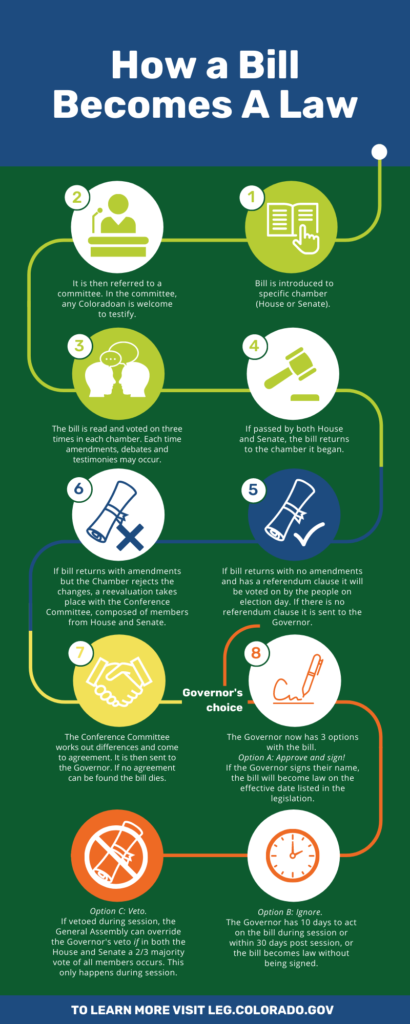All laws begin as bills. And all bills are born from ideas. Ideas for bills often come from citizens like you, which is another reason it is important to know your legislators.
The journey is a lengthy approval process between the House, Senate, and Governor. Understanding how a bill becomes a law can seem confusing and, at times, even a little overwhelming. To help, we’ve created an infographic to outline the steps (see below).
Legislators work with staff to draft a bill, and then it is introduced and goes to a committee. A committee is a group of legislators who provide oversight on specific topics. For example: If a bill focuses on agriculture, it will go to the committee that oversees agricultural issues.
The committee will debate and vote on the bill. If it passes the committee, they send it to the respective chamber (House or Senate) for a floor vote. (Fun Fact: Members of the public are welcome and encouraged to participate in committee meetings!)
Once in the chamber, a bill is debated and voted on three times, and each time it may be amended or changed. It may be sent back and forth between chambers several times to ensure that both chambers approve the final bill. Then it moves on to be signed or vetoed by the Governor. With the signature of the Governor, the bill becomes a law!
If the Governor vetoes the bill during the session, the General Assembly can override it with a two-thirds majority vote in both chambers. The Governor has 10 days to sign or veto the bill during session or within 30 days post-session, or it becomes a law without being signed.


